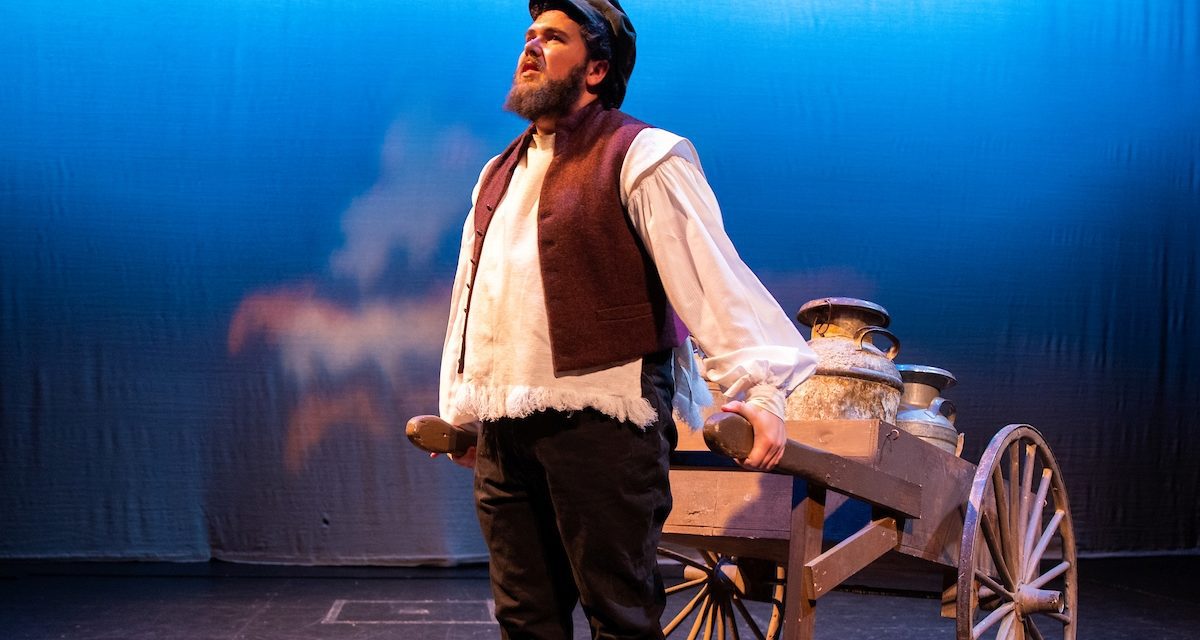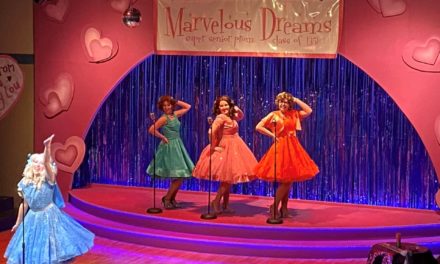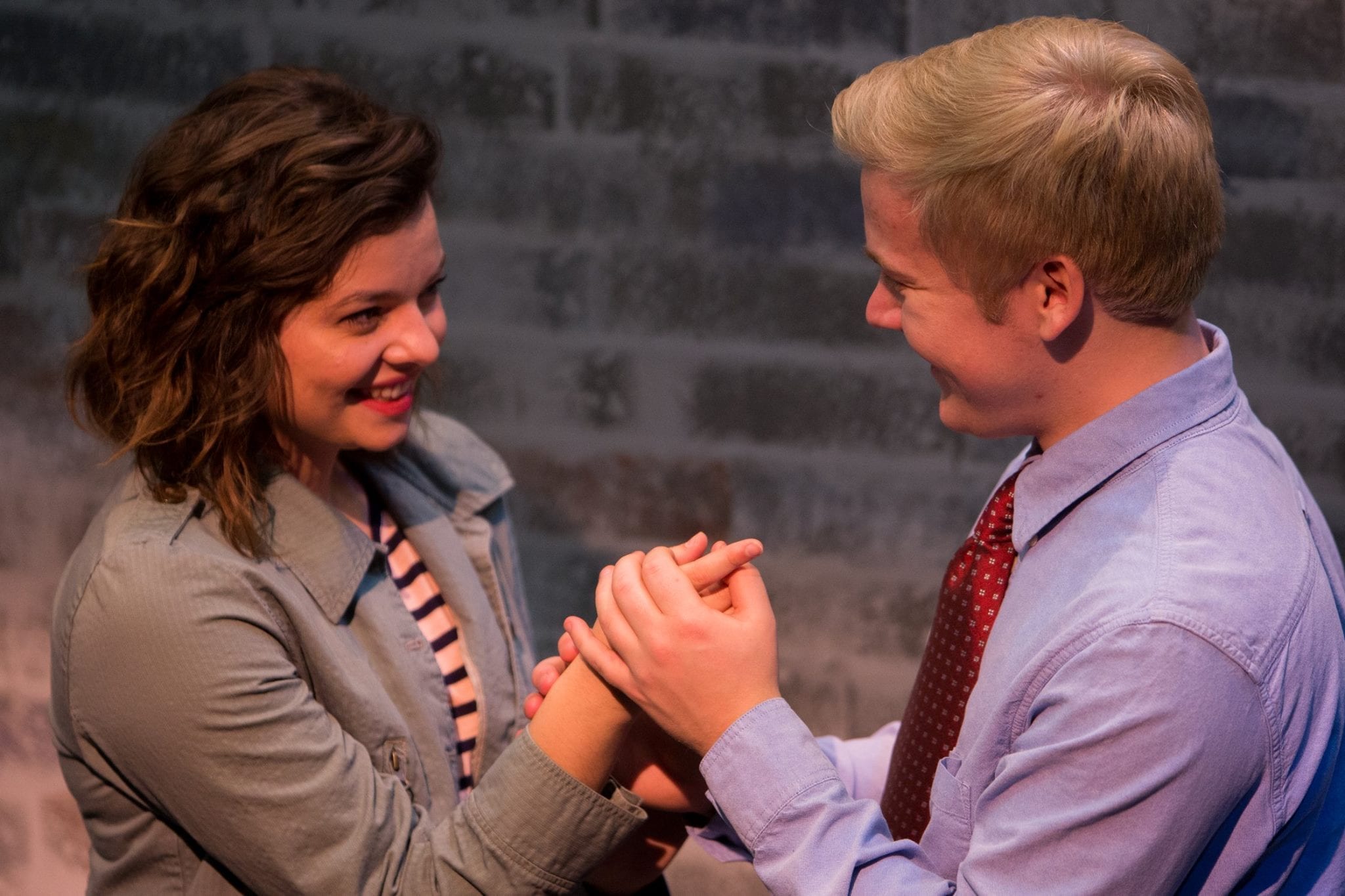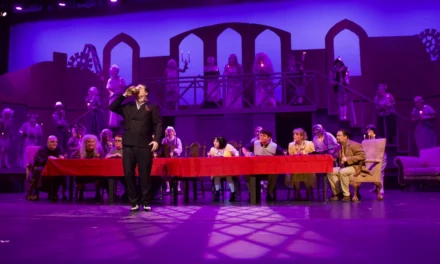PROVO — It is supposed to be a college production, but BYU’s Fiddler on the Roof is so well executed that audience member can be forgiven if they mistake it for a fully professional show. The cast, the orchestra, the designs, and the direction are all on par with the work of many professional regional theatre companies in the United States.

Show closes January 29, 2022.
The last great musical of Broadway’s golden age, Fiddler on the Roof follows the story of Tevye, a Jewish milkman in the small Russian town of Anatevka. Tevye’s three oldest daughters are all aiming to get married, but they worry that the town matchmaker will select an undesirable husband for them. Moreover, the intolerance of the Russian government against the Jewish population is making life increasingly difficult for the citizens of Anatevka. These domestic and political conflicts threaten Tevye’s way of life, as he struggles to adhere to tradition in a changing world.
A production of Fiddler lives or dies by its Tevye, and Peter Morgan is up to the task. His Tevye bears his soul to the audience, and Peter Morgan turns the monologues in Joseph Stein‘s script into deep, confessional moments. Peter Morgan also excelled at showing Tevye’s love for his daughters, and even Tevye’s arguments with them come from a place of love. I also appreciate Peter Morgan’s knack for comedy; he never failed to garner a laugh when it was appropriate.

Left to right: Bronwyn Reed as Tzeitel, Sage Patchin as Hodel, and Emma Larsen as Chava. Photo by Joey Garrison/BYU.
Nikole York‘s Golde is an attentive mother, and York is believable as a matriarch of a large family. York has perfected the “mom voice” of a woman who has given orders to children for years. But she shines most in her scenes with her on-stage husband. “Do You Love Me?” bubbles with mature, wise love and faithfulness, mostly because of York’s ability to show a comfortable openness and affection for Tevye.
Notwithstanding the strength of the leads, the supporting actors and ensemble of Fiddler on the Roof can match them in talent. Listing all of them would be tedious. However, I cannot neglect to mention the oldest three daughters by name. As Tzeitel, Bronwyn Reed brings a dose of idealism and innocence to the show, especially as she pleas to be able to marry the tailor Motel Kamzoil (played by Taylor Egan). Sage Patchin plays Hodel with vigor, which grows organically into the determination Hodel needs to marry the radical scholar Perchik (played by Justin Bawden) and support him in his travels and trials. Finally, Emma Larsen is a sweet daughter who hangs on her older sisters’ words and actions—making it believable that she later follows in their footsteps to choose the man she wants to marry (the gentile Fyedka, played by Steven Bangerter). Additionally, understudy Lindsay Whitney played an eager Yente, whose energy for arranging marriages produced some of the funniest moments of the show.

Left to right: Emma Larsen as Chava, Bronwyn Reed as Tzeitel, Sage Patchin as Hodel, and Peter Morgan as Tevye. Photo by Joey Garrison/BYU.
The entire town of Anatevka feels like an organic community, mostly thanks to the vision of director David Morgan. Whether in the “Sabbath Prayer,” the wedding scene, or in the tavern, David Morgan blocked the action to emphasize the community’s social ties. This made the tragedy of the Jews’ expulsion from Anatevka into a visceral and emotional event. His most innovative contribution, though, is the “The Dream,” where Tevye claims that he had a vision stating that Tzeitel should marry Motel. The ensemble, dressed in tattered white robes and wearing white commedia dell’arte masks, brought an otherworldly vibe to the scene as the demonic ghost of Fruma Sarah (played by Odine Morgan-Garner) shrieked her song above the stage. The entire effect was eerie and surprising—even for audience members who have seen Fiddler before (though the diction of the last third of the song faltered, making Sheldon Harnick‘s lyrics difficult to understand).
Another highly creative aspect of the show was the choreography from Adam Ray Dyer. Most of Dyer’s work was based on modern dance styles of movement, which added a clever visual style to the dancing. Dyer’s work bursts with originality. There is no bottle dance, but audiences won’t miss it because the exuberant dancing Dyer puts into the show instead is so engaging. Dyer also used a few movements (like a suddenly upraised hand that is slowly rotated as its lowered) in multiple songs, which added unity to the different songs.
Music director Korianne Johnson also contributed to the show’s excellence, and under her supervision the cast executed gorgeous, tight harmonies in “Tradition,” “To Life,” and “Anatevka.” One of the great pleasures of this production of Fiddler on the Roof is the 75-piece orchestra, under the supervision of conductor Christian Smith. With an orchestra this size, every song in Jerry Bock‘s score sounds majestic. “To Life,” “Anatevka,” and the dance arrangements are rich and luscious, elevating the music to rare heights.
Whatever standards that the people involved in Fiddler on the Roof had, they surpassed them. A production this wonderful is a rare event. It truly is a “miracle of miracles” that such talented people could take old, familiar material and make it into a vibrant, superb production as BYU’s Fiddler on the Roof.





